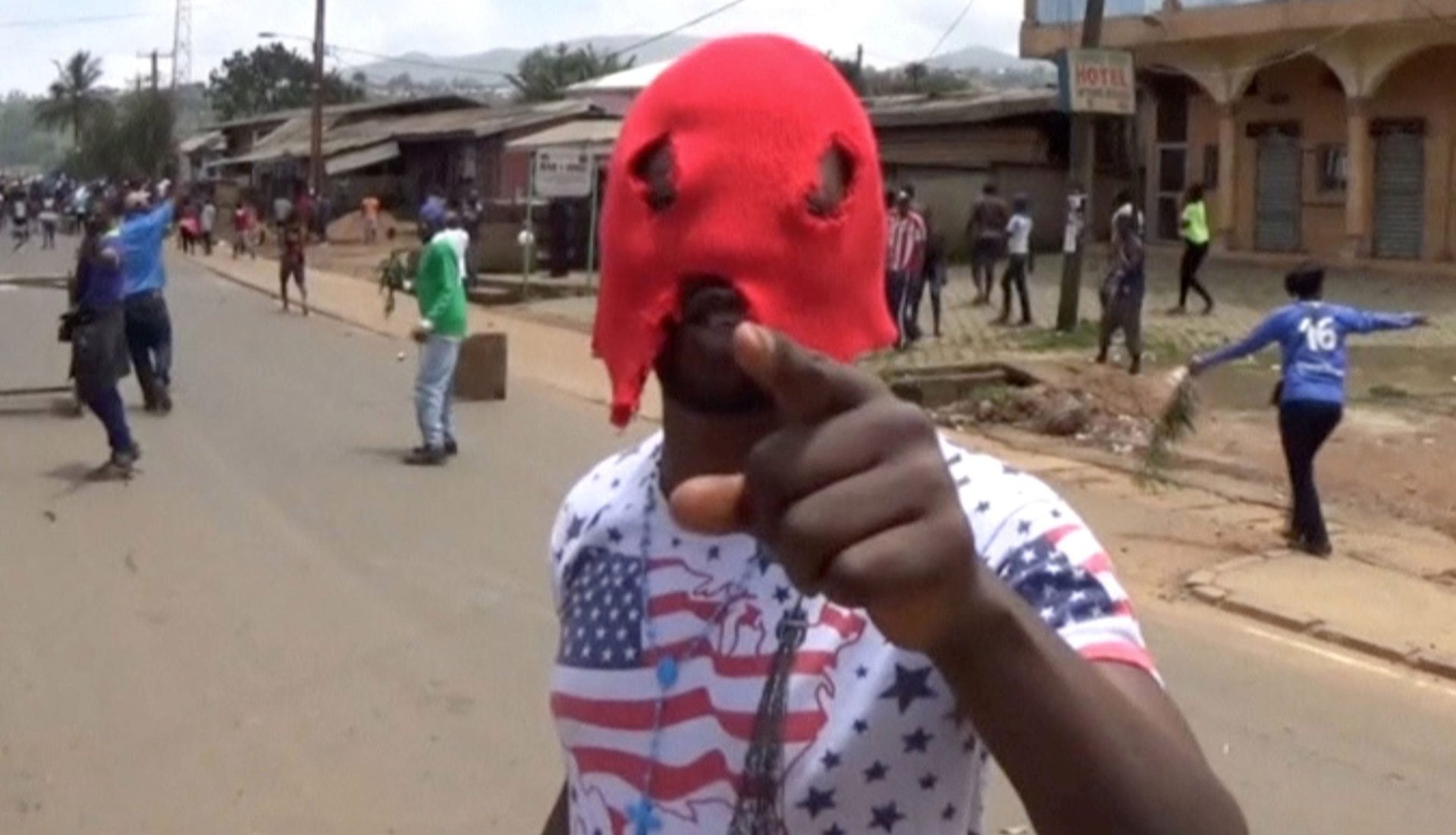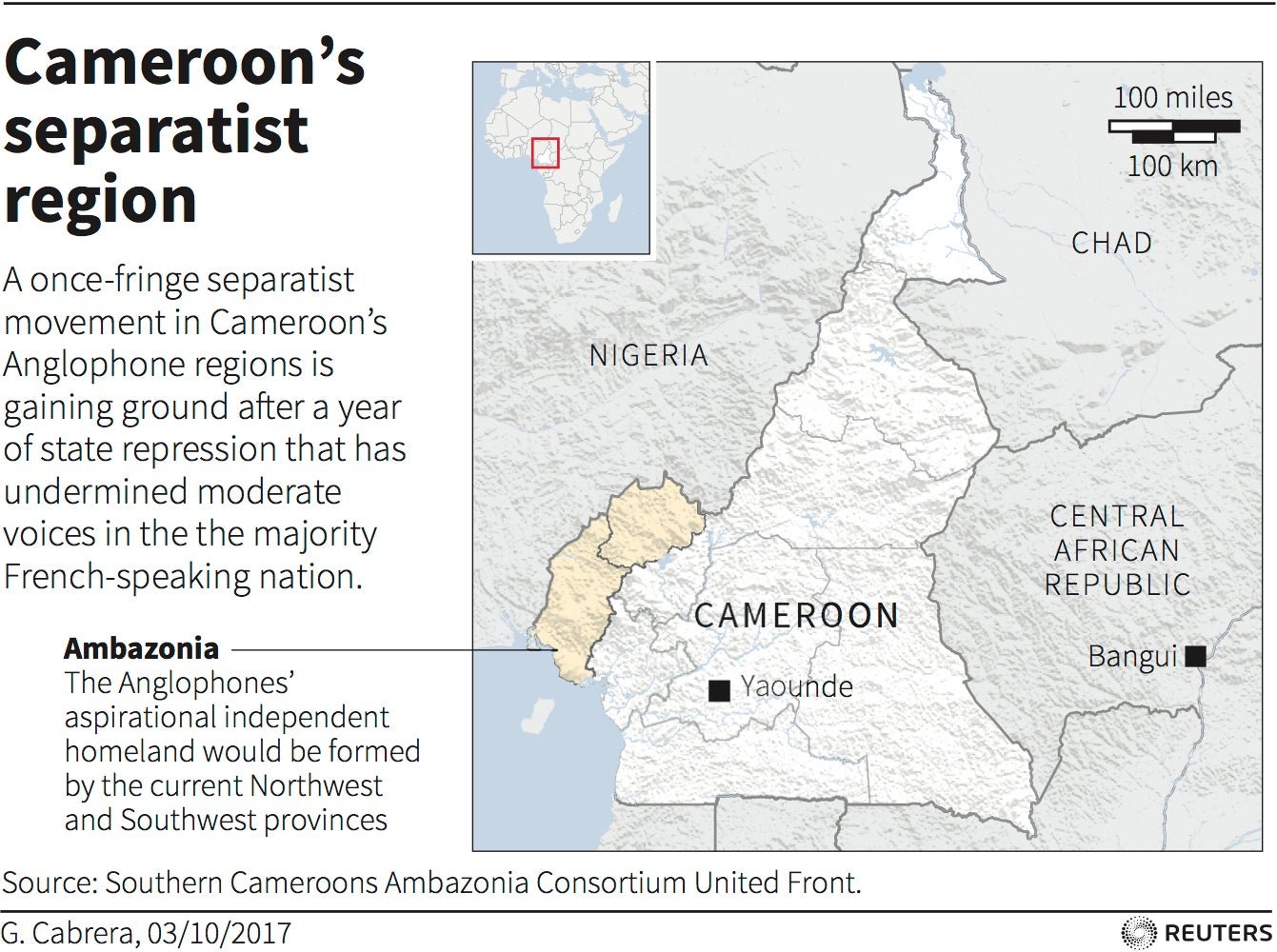The abduction of 78 school students in Cameroon’s Anglophone region could be another Chibok
On Monday (Nov. 5), witnesses said gunmen abducted dozens of mostly teenage students from a secondary school in Nkwen, on the outskirt of the city of Bamenda in Cameroon’s troubled English-speaking northwest region.


On Monday (Nov. 5), witnesses said gunmen abducted dozens of mostly teenage students from a secondary school in Nkwen, on the outskirt of the city of Bamenda in Cameroon’s troubled English-speaking northwest region.
The kidnapping, reminiscent of the 2014 abduction of 276 schoolgirls in Chibok, Nigeria which brought Boko Haram into global consciousness, is only the latest indication of how volatile the Anglophone conflict has become since its erupted in 2016.
The 78 students, as well as the school’s principal, driver and a teacher, were whisked off to an unknown location after a late-night attack on the school, local officials said. The governor of the north-west region said security forces have launched a search and rescue operation to bring back the captives alive.
Though some commentators immediately blamed armed secessionists seeking to establish a state called Federal Republic of Ambazonia (South Cameroons), none of the known separatist groups operating in the restive area has so far claimed responsibility for Monday’s abduction.
In an unauthenticated video circulating on social media, one of the kidnappers is heard instructing his hostages in pidgin English to present themselves: “I am a student of PSS [Presbyterian Secondary School] Nkewn, Form 5 Science. I was kidnapped by the Amba [Ambazonia] boys. I don’t know where I am,” one of the kidnapped students can be heard and seen in the video saying. The supposed kidnapper promised to release the students only after the “struggle”.
The Ambazonia Governing Council, whose armed wing is the Ambazoina Defence Forces (ADF)—one of the most active separatist groups, condemned the abduction and acts of violence against civilians. Obadiah Mua, secretary general of the Council claimed infiltrators and saboteurs had been planted within the Ambazonia independence cause.
The recent abduction follows similar attacks as Anglophone fighters struggle to enforce a school lockdown across the north-west and south-west regions of Cameroon.
Cameroon’s Anglophone crisis began three years ago when English-speaking teachers and lawyers went on strike demanding fair working conditions in the country’s Northwest and Southwest regions. They claimed their language and culture was being marginalized by French-speaking legislators and the national government of president Paul Biya. But after the government responded with force to some protests, things have since escalated over the last year to become a full-scale conflict between armed separatists and the Cameroonian army.

According to human rights groups, no fewer than 400 people have been killed as Cameroonian soldiers battle to squash increasingly bold armed separatists. Last week, an American missionary was killed in crossfire between separatists and the Cameroonian army in Bamenda, each side has blamed the other for the death.
The conflict has also led to the mass internal displacement of over 400,000 people. In the south-west region, the International Organization for Migration (IOM) estimates that 246,000 people have been internally displaced. Over 21,000 Cameroonians are also living in next door Nigeria as refugees.
Many international organizations, governments and personalities have called on the Biya government to employ dialogue to solve the crisis, but necessary steps for such effective dialogue are yet to be taken.
Sign up to the Quartz Africa Weekly Brief here for news and analysis on African business, tech and innovation in your inbox